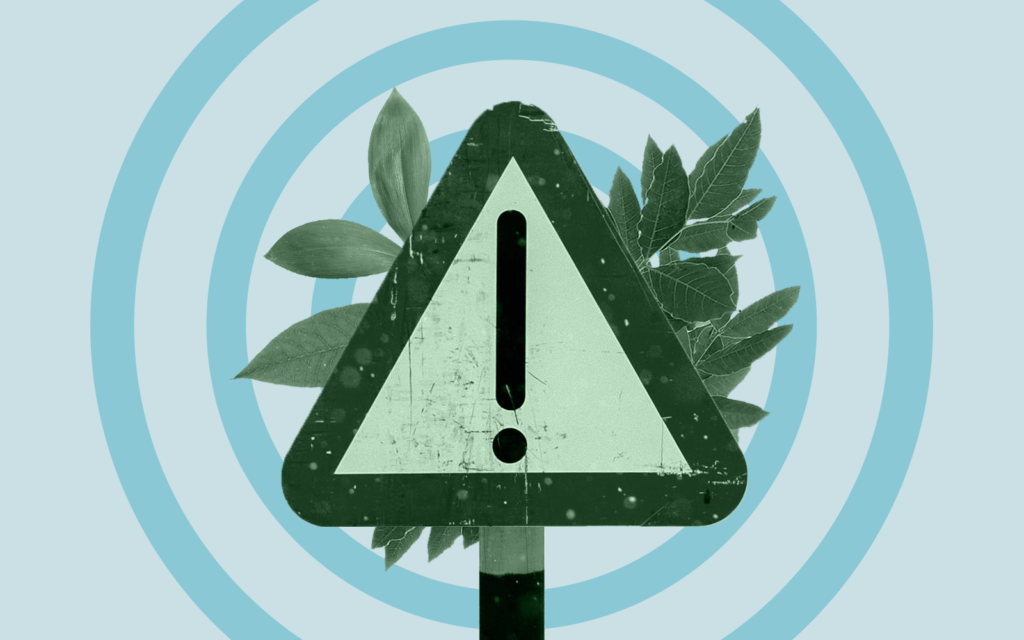
Don’t Let Greenwashing Drown Your CPG’s Reputation
June 10, 2022
There’s a lot of performative eco-friendliness from well-intentioned (and not-so-well-intentioned) companies trying to grab consumer interest with flashy marketing about their superior sustainability pushes.
This is an example of greenwashing. It’s an increasingly problematic practice, especially for sizable corporations already facing skepticism from cynical consumers.
Fortunately, there are alternatives to making empty environmental promises. These strategies have the power to attract loyal customers and committed employees to your large CPG company.
Greenwashing Explained
Greenwashing refers to promoting some aspect of a product, packaging, or entire company that seems like it’s creating a more eco-friendly future. Upon closer inspection, however, it’s clear the initiative is nothing more than window dressing. The company isn’t doing anything of substance to help the planet.
Here’s a pretty cut and dry example. You’ve heard of bioplastics, right? These new polymers often used for food and beverage packaging sound promising — at least to unsuspecting consumers. Bioplastics are supposed to be more sustainable because they break down through composting. Emphasis on “supposed to.” The problem is that these plastics only break down in industrial composting facilities, not in your average backyard composting bin.
If bioplastics are the only step a company is taking to reduce pollution, that’s greenwashing. After all, how many consumers would realize they have to take a bioplastic bottle to a special facility? How many would do it even if they did realize? How many have access to such a facility in the first place?
The hypothetical company in question is putting the onus on the consumer when they should be taking meaningful measures to combat climate issues themselves.
Why Greenwashing Is Increasingly Problematic for CPG Brands
Bioplastics are just one example of greenwashing and there are plenty of other ways companies practice it. But if you want to build a brand-loyal customer base, hiding behind dubious claims on your pack or in your marketing activations isn’t going to cut it.
Today’s consumers are savvy. They’ll take the initiative to research questions like, “What are bioplastics?” Consumers are also more cynical than ever. They often think corporations — CPGs included — are only out to make money.
Even employees are demanding more from their employers. They want to work for a company that genuinely cares about the planet as well as doing something about our climate change problems. In this employee-driven job market, job seekers can afford to be as choosy as they please.
Steer Clear of Greenwashing with the Right Sustainability Strategy
To mitigate consumer and employee skepticism and sidestep greenwashing, your CPG has to be transparent about sustainability. Bring your audience along for the ride as you navigate the complicated landscape of eco-consciousness. Be forthcoming about your efforts and the work that still needs to be done. Your honesty in building a cleaner company will go a long way in developing consumer trust and loyalty.
But how can you be transparent about your efforts and ensure you’re not greenwashing? You have to adopt a rigorous plan that outlines the steps you’re taking toward change. These steps need to make your CPG company authentically sustainable and environmentally friendly. Such a plan can take one of two forms:
1. Corporate Social Responsibility Strategy
The words like “sustainable” and “sustainability” have become so broad they can be deceiving. They also don’t provide any real context for consumers or accountability for companies. Frankly, these words often misdirect consumer thinking just like greenwashing does.
For your large CPG brand, the term corporate social responsibility (CSR) gets closer to what you really need to do to be sustainable — not just say you’re sustainable.
CSR is a self-regulating practice/strategy within an organization that achieves economic, environmental, and social impact goals without negatively affecting the bottom line. The foundation of your CSR strategy can be a framework such as the triple-bottom line method, among others.
2. Environment, Social, Governance Strategy
Because CSR is self-regulating and qualitative — meaning companies monitor their own progress — it might not be the best path toward transparent sustainability.
The term environment, social, governance (ESG) is more apt. ESG strategies force companies to construct a reporting framework and rock-solid accountability practices that provide quantitative results on not only sustainability initiatives, but also corporate culture and community efforts.
ESG strategies are arguably more holistic than CSR strategies in addition to being more measurable. What’s more, ESG is trending upward. At the moment, it’s most popular in real estate development and construction spheres — but that’s to your advantage. Adopting an ESG strategy at your CPG company would put you on the cutting edge and endear you to your ever-suspicious audience.
As if you need more convincing that ESG is the future, Blackrock’s Larry Fink reinforced the value of robust ESG performance in his groundbreaking letter to CEOs, naming “purpose as the engine of long-term profitability.”
His sentiment was echoed by a growing number of exec teams in a recent survey. The report found that 63% of executives claim ESG is a very important or critical factor in their company’s long-term success, up from 36% just two years ago.
Next Steps to Ditch Greenwashing for Good
No matter which path you take — CSR or ESG — you’re on your way to more transparent, effective sustainability initiatives for your CPG brand. If you need help starting a strategy, consider hiring an external environmental executive.
If you also need a hand ensuring your food and bev pack isn’t guilty of greenwashing, we’re CPG packaging experts at your disposal.


